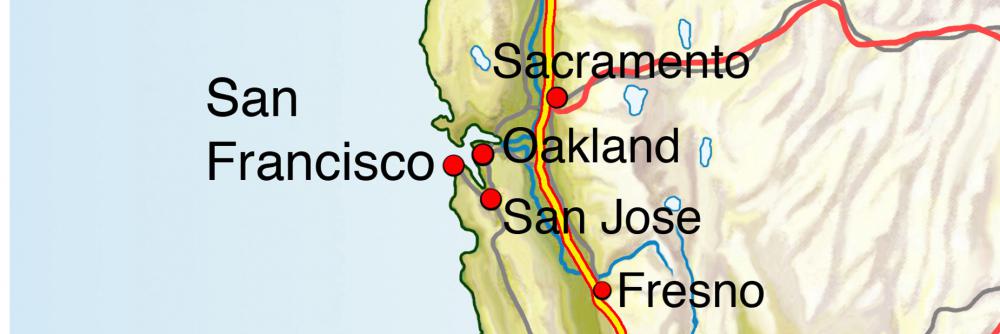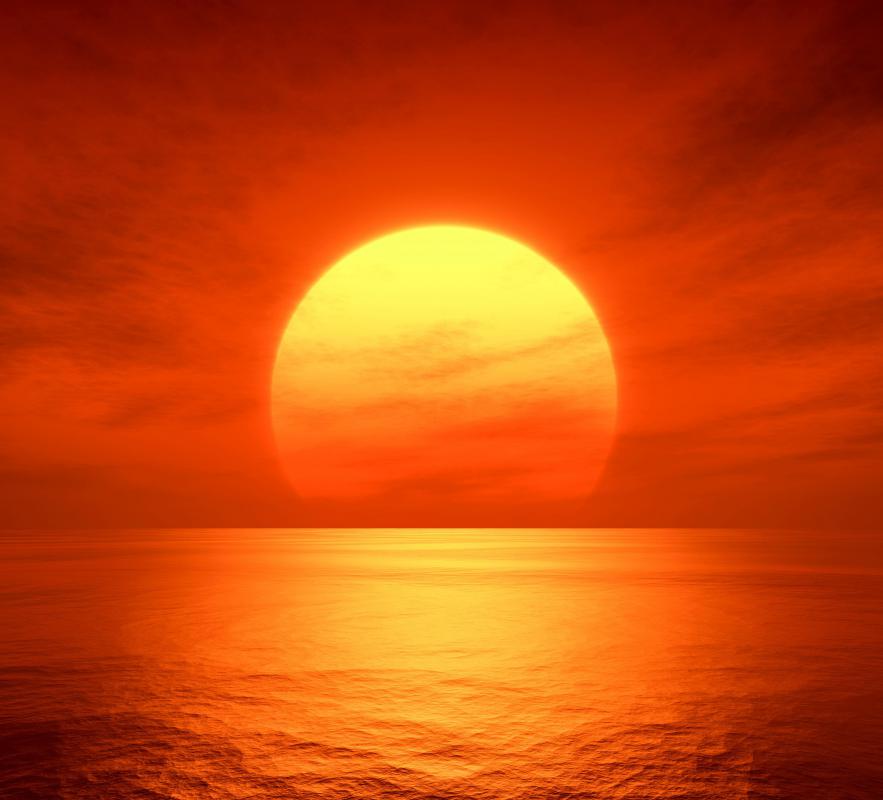At AllThingsNature, we're committed to delivering accurate, trustworthy information. Our expert-authored content is rigorously fact-checked and sourced from credible authorities. Discover how we uphold the highest standards in providing you with reliable knowledge.
Why is San Francisco so Foggy?
If you’ve visited San Francisco, or lived there in the past, then you are well acquainted with the fog that blankets its hills, sometimes obscuring from sight all but the tallest buildings. Despite the fog, the city's climate is quite temperate. Though it will boast a few warm days, particularly in early fall, and a few cold ones, temperature change in “the city” is not significant, bordering on the cool and crisp for most days.
The explanation for the fog is actually quite simple. The city is bordered on three sides by water, framed like a jewel between the Pacific Ocean and the San Francisco Bay. Meanwhile, the summer temperatures of surrounding cities, like those in the East and North Bay can cook in the summer months, with temperatures easily reaching into the low 90s to low 100s F (32.22-37.78 C). The heat produced by inland temperatures, combined with the cool water of the Bay and Pacific Ocean, and the winds coming in from the water, turn the city into a paradise for lovers of fog. North Bay and South Bay residents also benefit from fog creeping in at night to cool down hot temperatures.

Generally, the farther east you are from the coast, the less fog you get. Areas in the East Bay like Pleasanton and Walnut Creek receive very little cool down from what some weathermen in San Francisco call the “fair weather maker” of fog. Areas can be more or less foggy depending upon the location. If you’re near the SF Marina, or near Ocean Beach, the fog can envelop the area for most of the day during the summer months. The Sunset District tends to see fog clear just in time for sunset and then re-gather with the approach of night. Areas downtown may clear up sooner, depending upon proximity to the water.

Because the cities around San Francisco are warmest during the summer months, this is generally when the fog is deepest. Tourists often make the mistake of traveling to “sunny California” packing only shorts and tank tops, and find that stays in San Francisco can be very cold indeed. It’s a good idea to bring sweaters, long pants and sweatshirts if you plan to visit the city during summer.

The mildest weather begins to occur as inland temperatures cool, producing less fog. City residents and smart travelers relish the sunshine of late September and October. These are frequently the warmest months, when the Golden Gate is truly gold in the color of turning leaves and plenty of sunshine.
Frequently Asked Questions
What causes the fog in San Francisco?
The fog in San Francisco is primarily caused by the marine layer, influenced by the cold California Current offshore. Warm, moist air from the Pacific Ocean meets the chilly waters of the current, causing the air to cool and condense into fog. This natural air conditioning effect is most pronounced during the summer months.
How often is San Francisco foggy?
San Francisco experiences fog on a regular basis, particularly in the summer. According to the National Weather Service, the city can have foggy conditions up to 30% of the time from June through August, with the western neighborhoods often shrouded in fog more frequently than the eastern parts of the city.
Does the fog in San Francisco affect local wildlife?
Yes, the fog in San Francisco can affect local wildlife. It provides essential moisture for plants in coastal ecosystems, which in turn supports various animal species. The fog drip helps sustain redwood forests and other vegetation during the dry season, creating a unique habitat for a diverse range of flora and fauna.
Is the fog in San Francisco present year-round?
While fog in San Francisco is most common in the summer, it can occur year-round due to the city's unique microclimates. However, the frequency and intensity of fog vary throughout the year, with less occurrence during the winter months when the Pacific High pressure system moves southward, reducing the marine layer's influence.
What time of day is fog most likely to occur in San Francisco?
Fog in San Francisco is most likely to occur during the late night and early morning hours. As the land cools overnight, the temperature difference between the cool land and the relatively warmer ocean increases, leading to the formation of fog that often lingers until the sun's warmth dissipates it by midday.
Can the fog in San Francisco impact travel and transportation?
Yes, the fog in San Francisco can significantly impact travel and transportation. Dense fog can reduce visibility, affecting road traffic and occasionally leading to delays at San Francisco International Airport. The iconic Golden Gate Bridge has fog advisories for drivers, and maritime traffic must navigate carefully through the foggy bay.
AS FEATURED ON:
AS FEATURED ON:













Discussion Comments
I grew up in the San Francisco Bay Area and live there again now, and I've still never quite been able to get used to the summers. The east bay, where I live, can be quite hot in the summers, and I still make the mistake of under-dressing when I visit the city. A 25 minute drive from my house in the east bay to San Francisco can cover a temperature drop of over 30F on some days!
This oasis of cool is usually quite refreshing when leaving the hotter areas of the Bay Area, but always remember to bring a spare jacket or two, and forget about shorts most of the time.
Post your comments